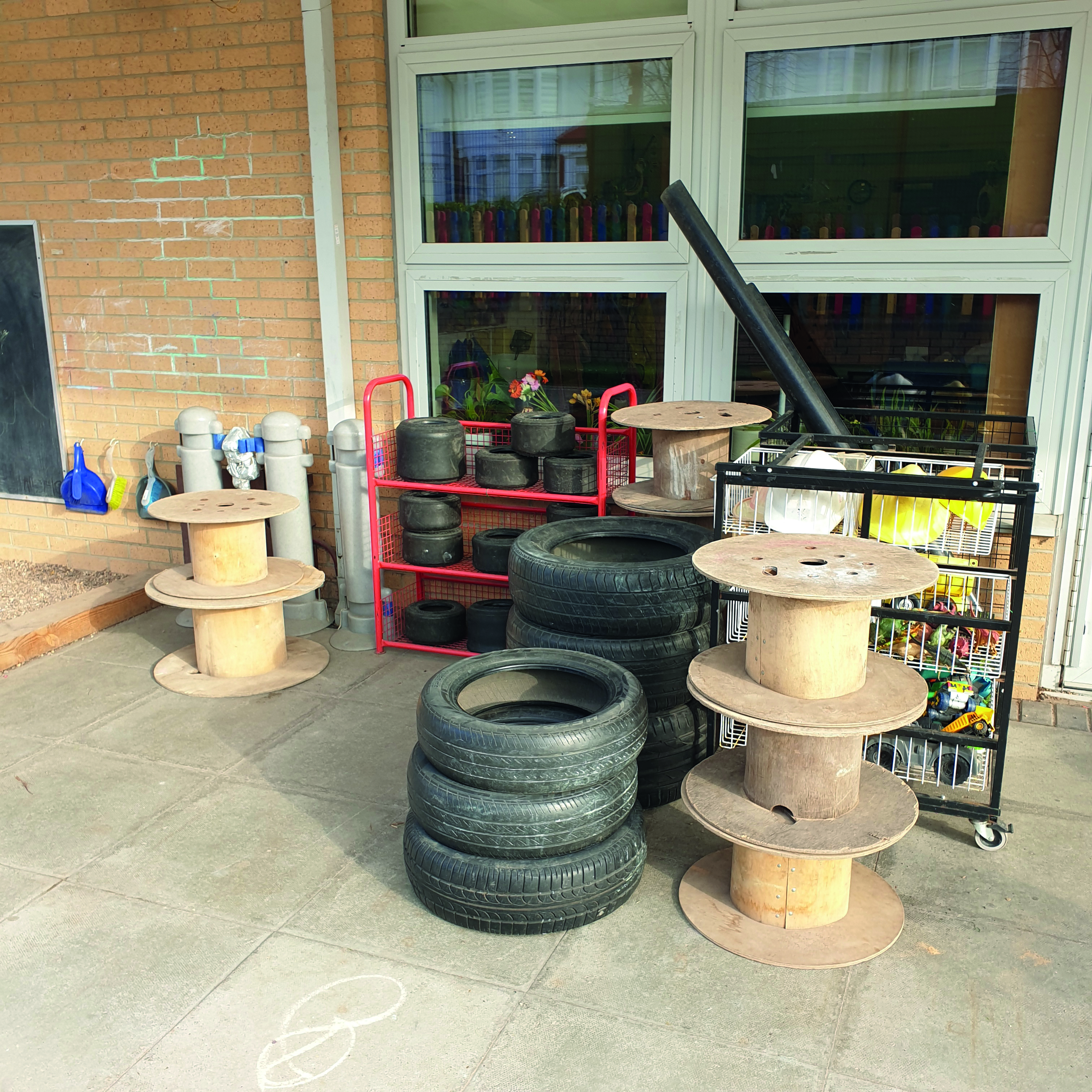
Early years is all about fostering children’s independence, imagination, communication and choice. Having a classroom which includes loose parts, rather than just pre-defined resources, does just that.
But the theory of loose parts is nothing new. It was first proposed in the 1970s by Simon Nicholson, who believed in their ability to empower creativity. Loose parts theory is about giving children the best opportunity to learn through play by giving them things that allow them to play in many different ways. Loose parts are infinitely more stimulating and engaging than pre-defined objects.
What are loose parts?
Loose parts are a quantity of an object, for example conkers, buttons, or shells. I steer towards natural objects because of the variety of colours, textures, weight, and because they are mainly free!
These objects can be moved, carried, combined, redesigned, lined up, taken apart and put back together, and because they are not pre-defined, children can imagine them to be whatever they like. Having this versatility enables children to develop their own ideas and explore the world around them.
Loose parts promote a purely child-led narrative which enables children to create, design and problem solve. They also support the development of coordination and balance: both key gross motor skills.
I believe it is important to include both small loose parts and large loose parts in your continuous provision in order to support the learning and development of all the children in your setting.
What should I gather?
I prefer natural objects because they are easy to collect and replenish. Here are some ideas to get you started:
- bottle lids
- glass beads
- cinnamon sticks
- shells
- acorns
- pine cones
- pebbles
- lollypop sticks
- nuts and bolts
- corks
- curtain rings.
Health and safety: Check your loose parts regularly – conkers with cracked or broken outer layers need to be thrown away, as do chipped shells that have become sharp.





Where do I find them?
Surprisingly, once you start looking for objects you can collect, you’ll see loose parts everywhere!
Pick up and keep a lookout in your local area, especially in autumn, for pine cones, conkers, acorns, sticks and pebbles. Collect as many as you can – they are a great start to your collection. Another idea is to arrange a class trip to the local park and go on a nature treasure hunt. I recommend washing these natural resources with antibacterial washing liquid or Milton, but be sure to leave them to dry off really well before adding them to your storage container to avoid any mould growing!
Don’t be afraid to ask. The phrase ‘If you don’t ask, you don’t get’ really is true. I collected my corks during a weekend away in Kent. They were kindly donated to me by a wine merchant – so try contacting your local merchant! Go-kart and car tyres are great large loose parts for your outdoor classroom. Companies usually have to pay to dispose of them so are more than happy for you to take some off their hands. I always check tyres for nails and other debris and give them a scrub down using warm water and fairy liquid.
You can ask parents and carers to help too by bringing in items for you to add to the collection.
Don’t forget charity shops and car boot sales where you will find little bags of treasures like the little ‘wood biscuits’ that I picked up for 50p.
How do I organise them?
Including loose parts in your setting means that the classrooms will be full of resources that can be used across all areas of learning, both inside and outside, but thought needs to be given to how to store and display them.
I store small loose parts, like pine cones, corks and buttons, in strong, plastic fish bowls. I bought mine from a pound shop four years ago, so they are very economical. I drill a small hole near the top of the fish bowls to attach content labels using a cable tie – this labelling is a great time-saver at tidy-up time; each child picks a bowl and gets filling!
Indoors, these loose parts can be found with the wooden blocks (another open-ended resource).
Outdoors, I also offer small loose parts beside the mud kitchen and as part of continuous provision for maths. These are kept in large tin cans that I repurposed from the school canteen.
Large loose parts – including go-kart tyres, cable reels and gutter pipes – are positioned outside next to a gravel pit that I installed.
Shardi Vaziri is the assistant head teacher at Tottenhall Infant School in Enfield, North London and an educational consultant specialising in loose parts and sustainable provision. Contact her at: earlyyearsonashoestring@gmail.com.









